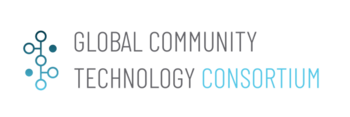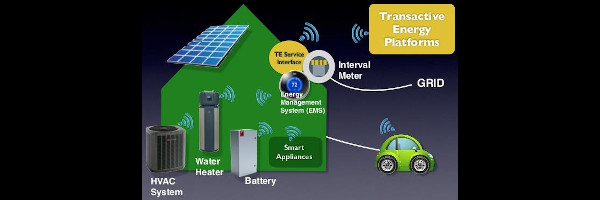Transactive Energy for Smart Cities
| Transactive Energy for Smart Cities | |
|---|---|

| |
 Transactive Energy Platform | |
| Team Organizations | MaCT USA IoT-IS TAG (Sweden) and YRC (KSA) |
| Team Leaders | William Miller |
| Participating Municipalities | Yanbu Saudi Arabia |
| Status | Ready for Public Announcement |
| Document | None |
Description
This project makes use of PowerMatcher-IoT from project defined at http://www.powermatcher-iot.com which uses IEEE P1451.99 IoT Harmonization and an IoT Broker at http://www.ipdx.net software developed in Sweden. The project adds IoT XMPP to bridge any IoT protocol to provide cyber protection of privacy to meet Global Data Protection Regulations (GDPR) in the EU that can also be use else where including the US and facilitates data sharing for monetization of eDaler a new eDaler (Digital Currency) developed in Sweden and the United States. New CyberAI concerns will be evaluated to determine what conditions will require protection by allowing the owner of devices to determine what or who can control of situations in the city or if connected to an industrial or manufacturing facility that operation of a device does not create an unsafe condition for the plant or when used in a smart city that it does not potentially harm humans.
Challenges
Gaining cooperation with Smart Cities to participate (Complete)
Solutions
- Linkage will be by wireless communications to PowerMatcher sites using any appropriate IoT protocol in local cities and to authorized data shared by owners of devices for data analytics and Blockchain such as banks for monetization of the energy that is generated.
- Demonstration of operation to aggregators/utilities in test beds that are authorized by the Smart City. These actions will be provided thru federation of the data from IoT devices In the city and to share the information with those requesting the information which would include prevention of control actions.
- Connection to energy market to forward transactions to banks for consumers who maintain their power consumption to maintain balance of the grid The price will be related to the difference of renewable energy available in a sector less the power used for a price in $/KWH.
Major Requirements
- Gain support from participating smart cities (Complete)
- Gain cooperation with Sweden and Saudi Arabia (Complete)
- Develop IoT XMPP bridges to new IoT protocols (In-progress)
- Deployment software in participating smart cities (2019/2020)
- Analyze result to assure cyber security and AI protection
- Demonstrate capabilities to the community and local government utilities as part of the community resiliency programs
Performance Targets
| Key Performance Indicators (KPIs) | Measurement Methods |
|---|---|
|
The PowerMatcher-IoT – The Transactive Energy network will spur innovation and create jobs to help consumers to obtain energy savings and the monetary value of the energy that may be in excess of the energy they consume. The owner will have control over who has access to their data.
Energy reduction from homes and building (30%), increase in use of solar power (20%) and increase customer awareness of the benefits (50%) |
Transactions will be tested over 12-18 months to observe operations and expand the network. Information on operations will be tracked in log files and trends. The economic benefits will be analyzed and compared. Residents/citizens inquires will be obtain of their satisfaction of better control over their energy usage. PowerMatcher offers a passive approach that does not require any changes by the local utility and its connections. It offers a fair, either forward or spot agreement, to change their energy usage pattern and to leverage solar renewable energy when available. |
Standards, Replicability, Scalability, and Sustainability
PowerMatcher-IoT was developed in US and Sweden and will make use of IEEE P1451.99 (Sensei-IoT*) IoT Harmonization Standard the 1st Semantic Web 3.0 Standard for the Internet for Things (IoT*) and will now include bridges to other IoT protocols use different sensor interfaces to connect the PowerMatcher-IoT framework with Renewable Energy systems such as Solar with Flexible Interfaces that with either map a region of the smart city to a corresponding section of a Solar farm.
Federation of PowerMatcher-IoT sites can be replicated world-wide being highly scalable and sustainable. PowerMatcher-IoT is under consideration for deployment in the Kingdom of Saudi Arabia. The use would be the first use in the Middle East of PowerMatcher-IoT and in the US which will include cyber security and AI protection as well as secure data sharing authorized by the IoT device owner.
Cybersecurity and Privacy
TBD
Impacts
The work of our Action Cluster will demonstrate that the energy grid can provide monetization of renewable energy and maintain balance without of the Smart Grid without intervention by the utility which can augment deployment of other smart services in a community Microgrid’s and to allow consumers or prosumers to gain benefits of renewable energy from a Solar Farm.
Demonstration/Deployment
Phase I Pilot/Demonstration 2019/2020:
Initial test sites are selected and development of the collaborative secure interface for PowerMatcher using IEEE P1451.99 (Sensei-IoT*) will begin during 2020. The architectural framework will be reviewed by the cities and align with their community resiliency plan schedule
Phase II Deployment late 2020: System will have been tested and viewed by various utilities and ready for full scale operation aligning with deployments of community resiliency plans and Microgrid projects in the Smart Cities